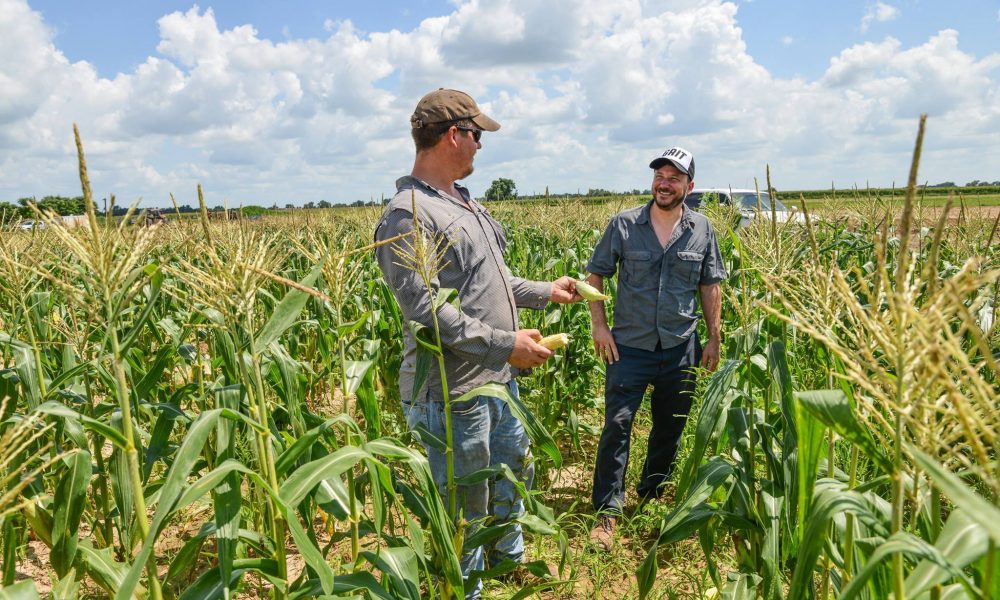

Today we’d like to introduce you to Dustin Windham, Michael Powell, and Jamal Ansari.
Thanks for sharing your story with us Dustin, Michael, and Jamal. So, let’s start at the beginning and we can move on from there.
I’m mad. Mad that Big Food is literally killing us. I’m not a foodie. I don’t take pictures of my plate. But my time abroad in the US Peace Corps gave me an opportunity to experience food in a new way. I ate unprocessed and cooked from scratch, which completely changed the way my body functioned and felt. Grocery shopping outside the US looks very different—neighborhood bakers and butchers across the street from fruit stands and flower shops; small store formats where you are greeted by name and get to know your neighbors. Processed goods are rare, because most countries lack the centralization and focus on shelf-stability that has defined the US food industry, enabling Big Food to thrive. When I returned to the US, I slipped right back into unhealthy eating habits because it’s hard to shop healthy in the US. That’s what it took to open my eyes – it took getting healthy and getting sick again before I realized the impact that food had played in my life. I’m mad that the same effects are being felt all over this country – that people that I love are grappling with food-related conditions and addictions every day. Grit is my response to a food system that has created an epidemic of poor health. It’s not enough to get mad – we’ve got to do something.
I first fleshed out this idea in the Rice University MBA program, working with faculty and classmates to design a flexible supply chain that can adapt to the changing food trends in the US and lower costs associated with handling a highly perishable product. Grit Grocery took shape using the minimum viable product (MVP) model of entrepreneurship, successfully launching a 6-month trial while developing the prototype Grit truck. Now we are raising money for additional truck/sales locations and preparing for a spring 2018 launch.
We’re always bombarded by how great it is to pursue your passion, etc – but we’ve spoken with enough people to know that it’s not always easy. Overall, would you say things have been easy for you?
Starting a business is HARD and everything takes longer than expected. Main 3 things an entrepreneur needs is money, media, and mentorship. The last two are usually required to get the first. We’ve found mentorship through the Rice Business/MBA community and Mayor Sylvestor Turner recently publicly endorsed our movement, so we are well on our way with mentorship and media. But money has been a struggle. We’ve raised around 85K via an equity crowdfunding campaign (Wefunder) but continue to seek angel investors interested in the real food movement as we seek to fund growth/scale.
So let’s switch gears a bit and go into the Grit Grocery story. Tell us more about the business.
Grit Grocery combines the local freshness of a Farmers Market’s with Blue Apron-like “Meal Bundles”, popping up shops on city sidewalks from a flexible food truck platform.
Healthy is Hard. Grit’s mobile markets make eating healthy easy and fun, by sourcing fresh food from local farmers and producers, bundling healthy meal offerings and offering it on the block, in your neighborhood. But we are more than a store. Grit is rethinking the way food gets from the farm to the customer’s table by tying our retail operation to supply chain innovation. Technology is used throughout to reduce cost, minimize shrink, understand customer preferences, and build a social following around local food. AI bots and predictive analytics drive a local supply chain that’s flexible and responsive. Together, these innovations will be used to construct a licensing model for rapid growth across the US.
In true Grit fashion, we ran a 6 month trial/MVP out of my garage, and proved that the concept has legs while also gaining a better understanding of the broken food system in America today. During the trial, we refined our sense of Grit’s competitive advantages and barriers to entry, on both the demand-side and supply-side of the business.
On the demand side, we are developing a highly curated, socially intimate and engaging retail brand experience. Grit Grocery is not like grocery or meal delivery experiences. In terms of product editing, Grit is focused on fresh and local produce, but we are not militant about that and offer a variety of everyday categories that people want – bakery, dairy, meat, desert, snacks. Further building on this curation strategy, Grit has developed “Meal Bundles” that combine available products into simple dinnertime solutions, allowing busy people to park the car, take the dog for a walk, pick up their dinner at the truck and then go home and make a healthy dinner. If you can turn on an oven, fire up the grill and chop a potato, that’s the simplicity level we want in a Grit Meal Bundle. From a social perspective, Grit operates more like a community destination, consistently parked in specific neighborhoods on the same weekday times in order to promote loyal habits and build bonds. Retail engagement happens through our evolving truck design—one of our co-founders has been designing innovative food retail experiences for over 10 years—as well as smart IoT technology and social media outreach that makes Grit’s offering easy, fun and interesting to shop.
The most intense barriers to entry happen behind-the-scenes, on the supply side. Grit brings the best of the farm, back to the block, and that means developing a local food supply chain that has largely been overlooked by traditional grocery store logistic network in their march towards bigger margins through production efficiencies. Those networks also neglect that people increasingly want local food and disdain their processed junk foods and the casualties of a long supply chain. But their margins are our opportunities, as they say. Grit works with local and regional area farmers and producers to develop a locally-based supply chain of quality goods that can be picked up in the morning and sold directly to consumers each afternoon. We are creating AI bots to communicate with producers, in order to streamline the ordering processes, in combination with predictive analytics that allow us to order more efficiently and seamlessly tie retail and sourcing operations. Farmers can deliver to our centralized logistics operation, where trucks will then move out to their daily destinations.
We believe Grit Grocery is a better way to do grocery. The traditional American grocery store is a dinosaur. Their large footprints, reliance on processed goods and inability to address quality food access for all people means they can’t keep pace with today’s evolving cities and especially the young adults who inhabit them. By getting rid of highly processed goods in center store aisle—the main (and dwindling) profit engine of big-box grocery models—Grit can focus on fresh, healthy food solutions for today’s younger consumers. We reduce labor costs dramatically, and because we roll in with a mobile market food truck, we do not bear the real estate burden or the inflexibility of an urban, brick and mortar institution.
Has luck played a meaningful role in your life and business?
Luck, timing, karma are at work all around us, but a better man than me will have to describe its eventual result.
The Grit model, and our way of working, is always flexible. We have our limits and our rules that we will never break (like, no over-processed junk food), but by and large, we are constantly learning new sides to this business. That open-mindedness makes us receptive to “lucky” opportunities coming our way. It’s also an essential ingredient of resilience and grit, too.
Contact Info:
- Website: http://www.gritgrocery.com/
- Instagram: https://www.instagram.com/gritgrocery/
- Facebook: https://www.facebook.com/gritgrocery/
- Twitter: https://twitter.com/gritgrocery



 Image Credit:
Image Credit:
Photographs by Emily Jaschke
Michael Ramos Photography
Getting in touch: VoyageHouston is built on recommendations from the community; it’s how we uncover hidden gems, so if you know someone who deserves recognition please let us know here.

















